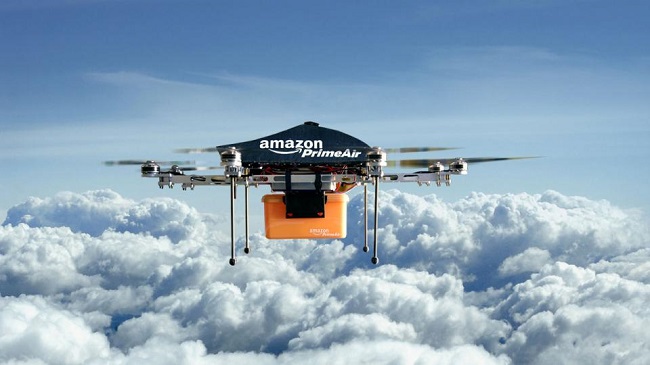In the small town of my youth, Drs. John Bugelwicz and Peter Gamache did house calls. What an antiquated concept – physicians who would bring their healing arts right into your living room.
If that isn’t peculiar enough, in that bygone era John Fox of Fox Rexall Drug would run a prescription by our house after his pharmacy closed. We could also rely on Bob Fritz to deliver a part for our Ford truck if he had what we needed in his store at Western Auto Supply.
Those were the good old days when I “went to school without shoes uphill both ways in the snow…”
Alas, the world has changed so much!
Now, when it comes to customer service, home delivery (in keeping with the lyrics of a Peter Allen song) represents something “old,” which has been repurposed through digital technology, “to be new again.”
While online ordering and mobile technology afford us the ability to not only buy with a voice command or the movement of a finger, these tools also allow us to have products brought to us with unprecedented speed and convenience. In an article titled, “There’s a delivery service for that,” Crain’s highlights how home delivery continues to meet timeless and fundamental needs:
“ Consumers are buying not just a meal kit, but potentially a little more time in their day, a little more privacy, or in the case of subscription boxes, simply a little more whimsy.”
So if my childhood had medical service, pharmaceutical, and auto parts delivery, what’s in store for consumers today?
Let’s just look at a few examples from the panoply:
Indianapolis and Bloomington Indiana have ClusterTruck which essentially is a food truck that makes food to order as they bring it to your door. On their website, they refer to this as, “A revolution in food delivery…Nothin’ soggy. Nothin’ cold.”
While we are on food delivery, how about the market niche carved out by October Kitchen in Manchester, Connecticut? According to Crain’s Connecticut, “senior citizens and baby boomers are the…bread and butter” of October Kitchen LLC, the Manchester-based food home delivery business that Paul Finney started 17 years ago. In contrast to more recent startups in the meal delivery space, which tend to market themselves more toward millennials…his target demographic is seniors .
Indirectly related to the “munchies” is the delivery of medical marijuana in California. San Francisco-based Eaze has been referred to as the “Uber of the cannabis industry.” A 2016 article for Techcrunch noted that Eaze launched in 2014 allowing patients to order on demand cannabis and quickly enabled “people to get a medical weed card in the state of California over the phone in under 10 minutes. The startup now claims availability in nearly 100 cities in California and says it has delivered marijuana to more than 200,000 people.”
Founded in 2012, Drizly has expanded to 40 markets in states like Wyoming, Colorado, Texas, and Florida which is well beyond their founding location in Boston. As per their website, Drizly is “driven by the noblest mission of them all — to make sure cups, fridges, and coolers are never empty again.” As such Drizly works with “local stores so you can shop their shelves using your smartphone or computer to order beer, wine, and liquor at the touch of a button. You still have to drink it the old fashioned way, though.”
I have been sharing examples of this trend toward effortless home delivery with keynote audiences for years now, highlighting brief puppy visits, on-demand gasoline fueling, and subscription services that will curate, surprise, and delight consumers with virtually every imaginable form of merchandise. An example is, Loot Crate which purportedly has about 700,000 subscribers all of whom receive, on average, $40 worth of merchandise at a time in the form of “geek subscription boxes for gamers and nerds.”
Even Walmart is “all-in” with the home delivery movement. Currently, they are test marketing an option that they hope will help the big-box merchandiser compete more effectively with Amazon.com. According to a Fashion Network article, Walmart is exploring “a program that allows store workers to deliver packages ordered on the store’s website after they finish their shifts… the step will cut shipping costs, speed the delivery of packages and allow workers to earn additional compensation.”
The big idea from this blog is that every business owner or leader should strive to create options to deliver products/services to customers’ doors whenever possible with as much ease and speed as the business owner or leader can muster.
Based on my reflection of my childhood and the target market for October Kitchen, I’ll take the liberty to modify a 1979 commercial tagline which suggested orange juice is not just for breakfast anymore and instead suggest, “ Home delivery is not just for Millennials anymore .”
That tagline, like digitally enhanced home delivery, truly does prove that “the more things change the more they stay the same.”



